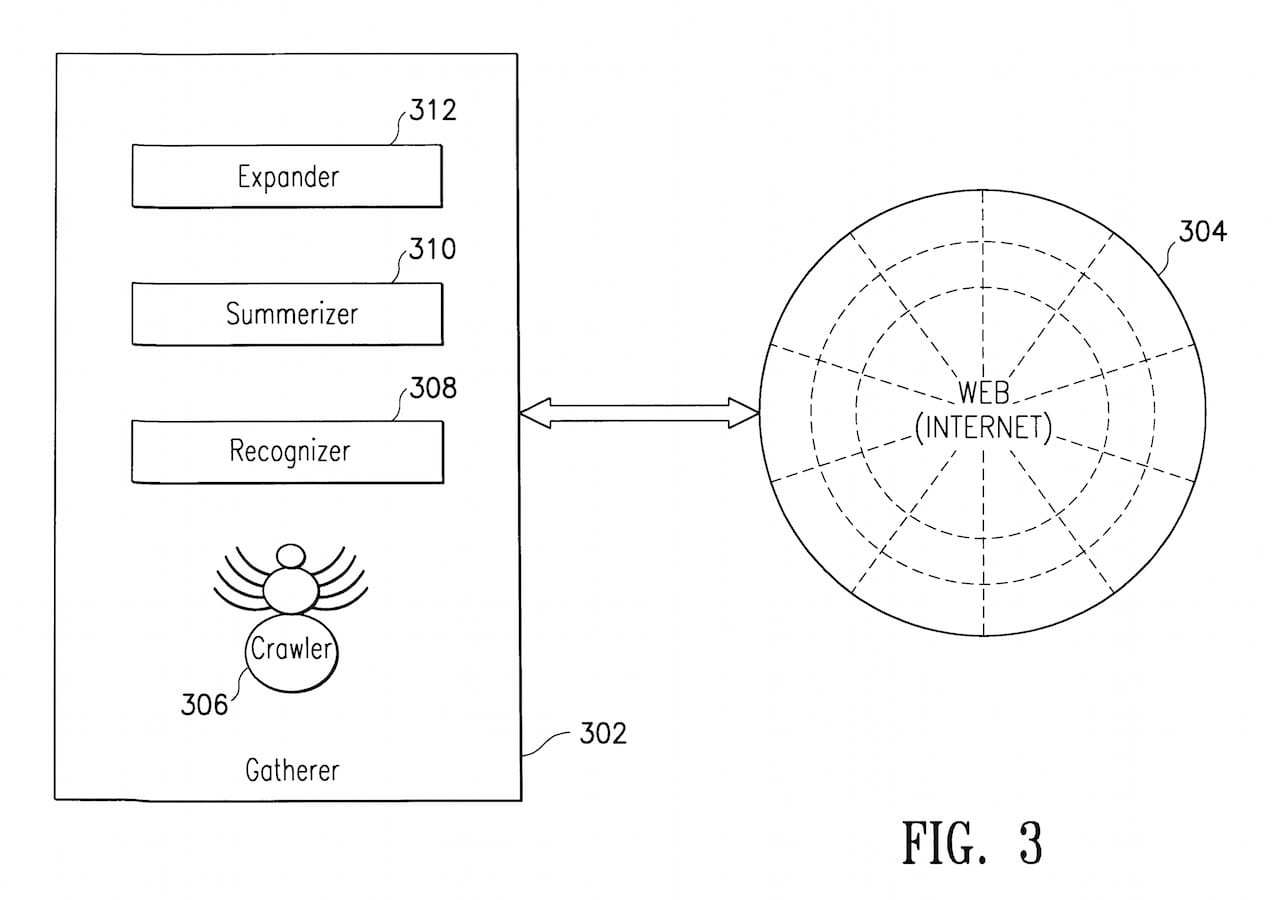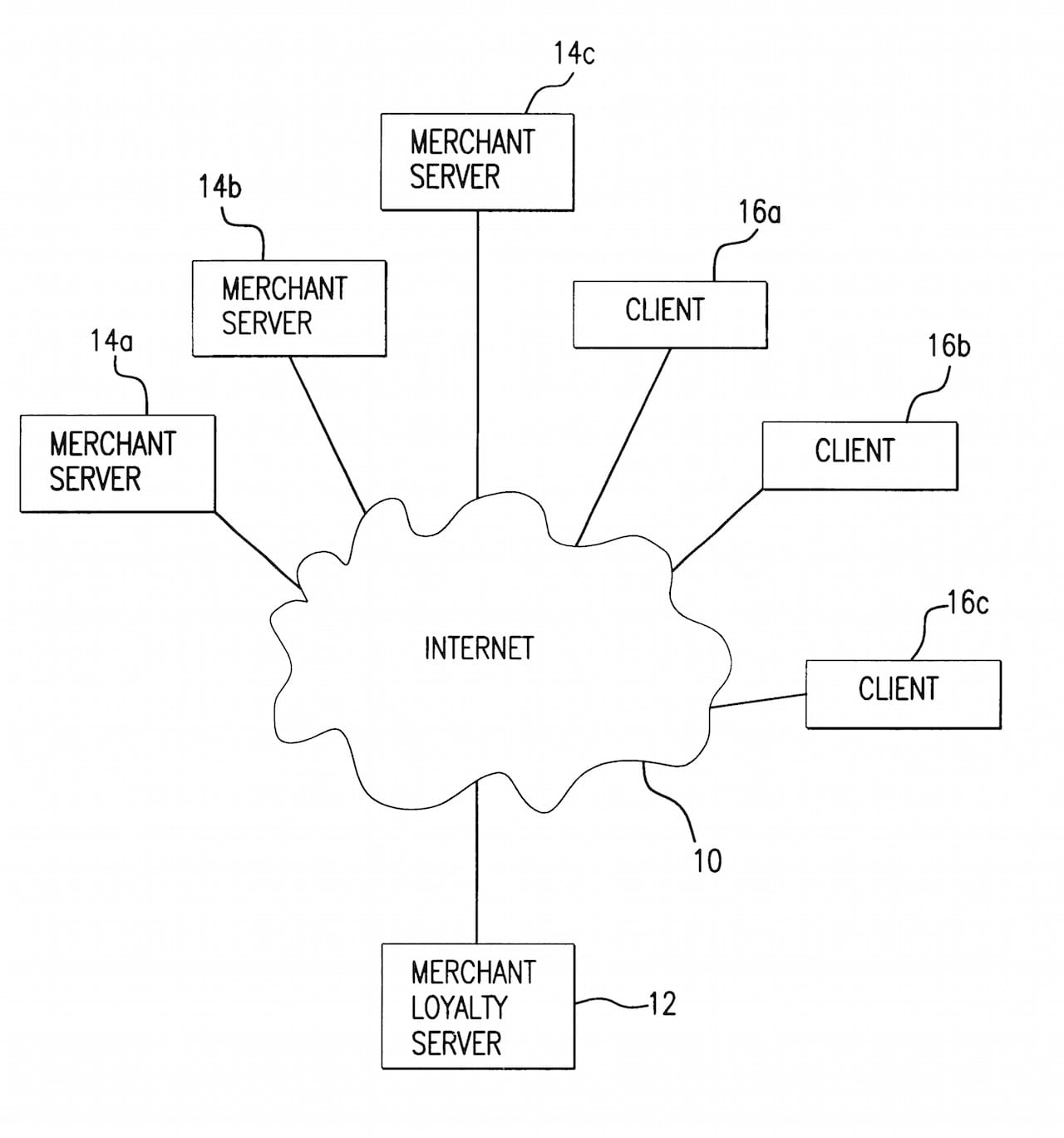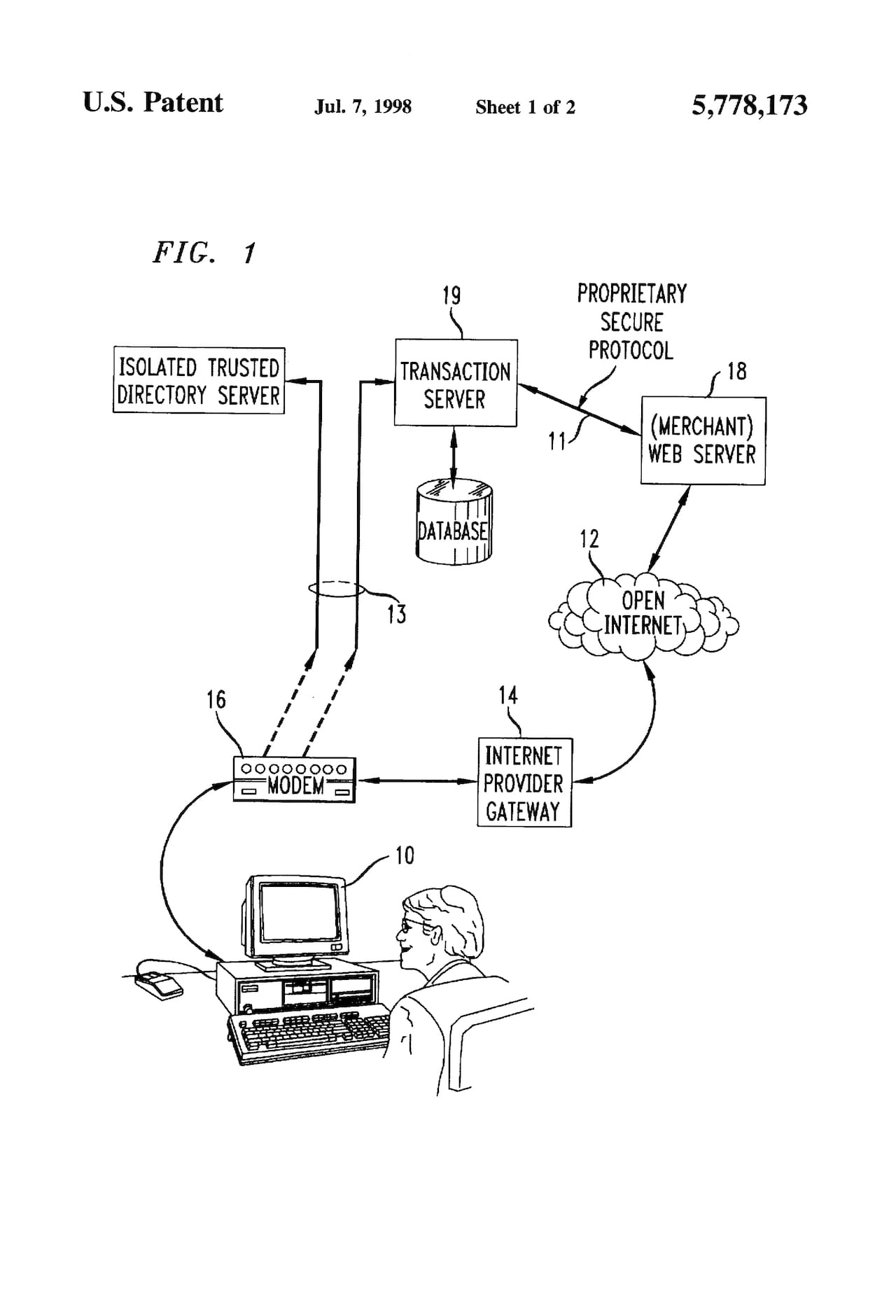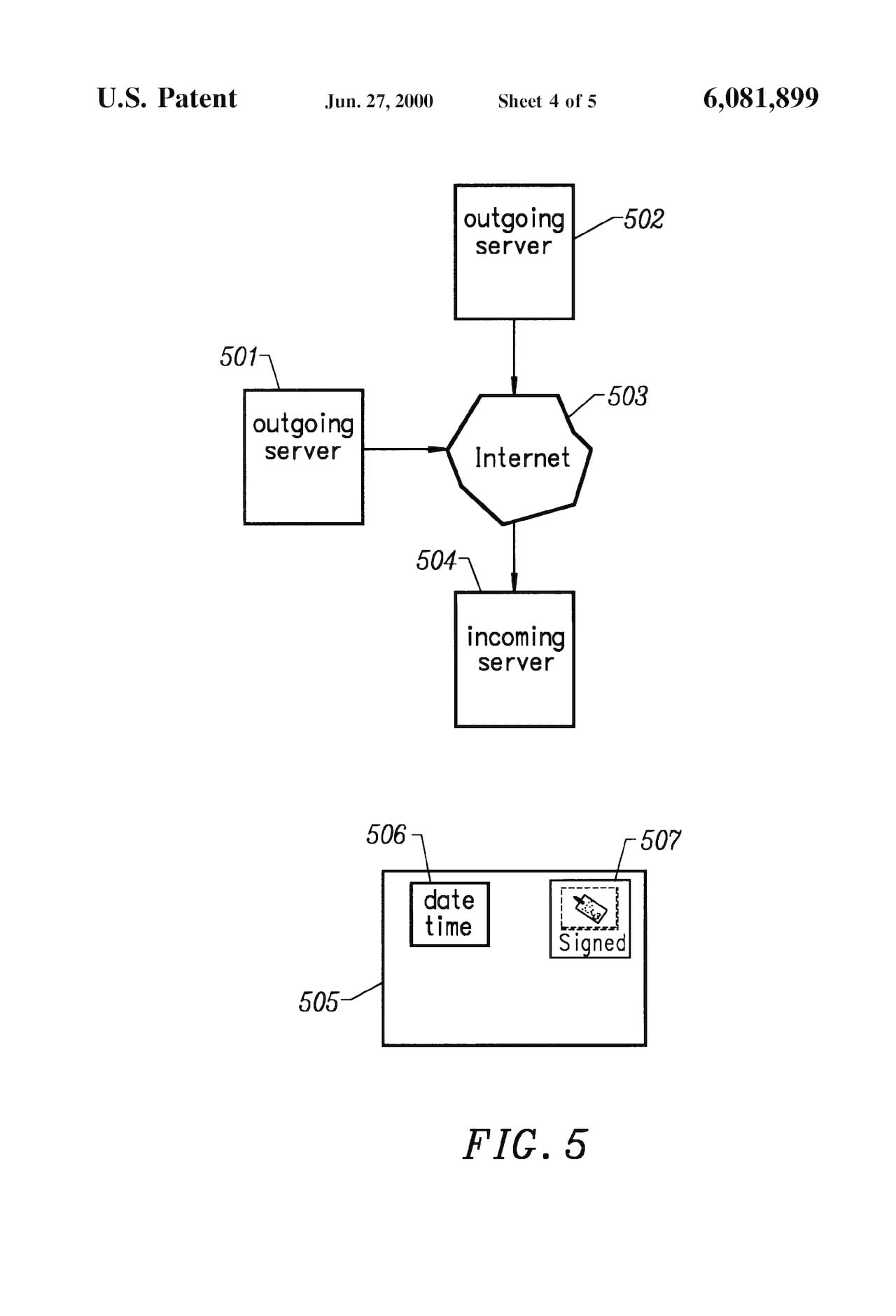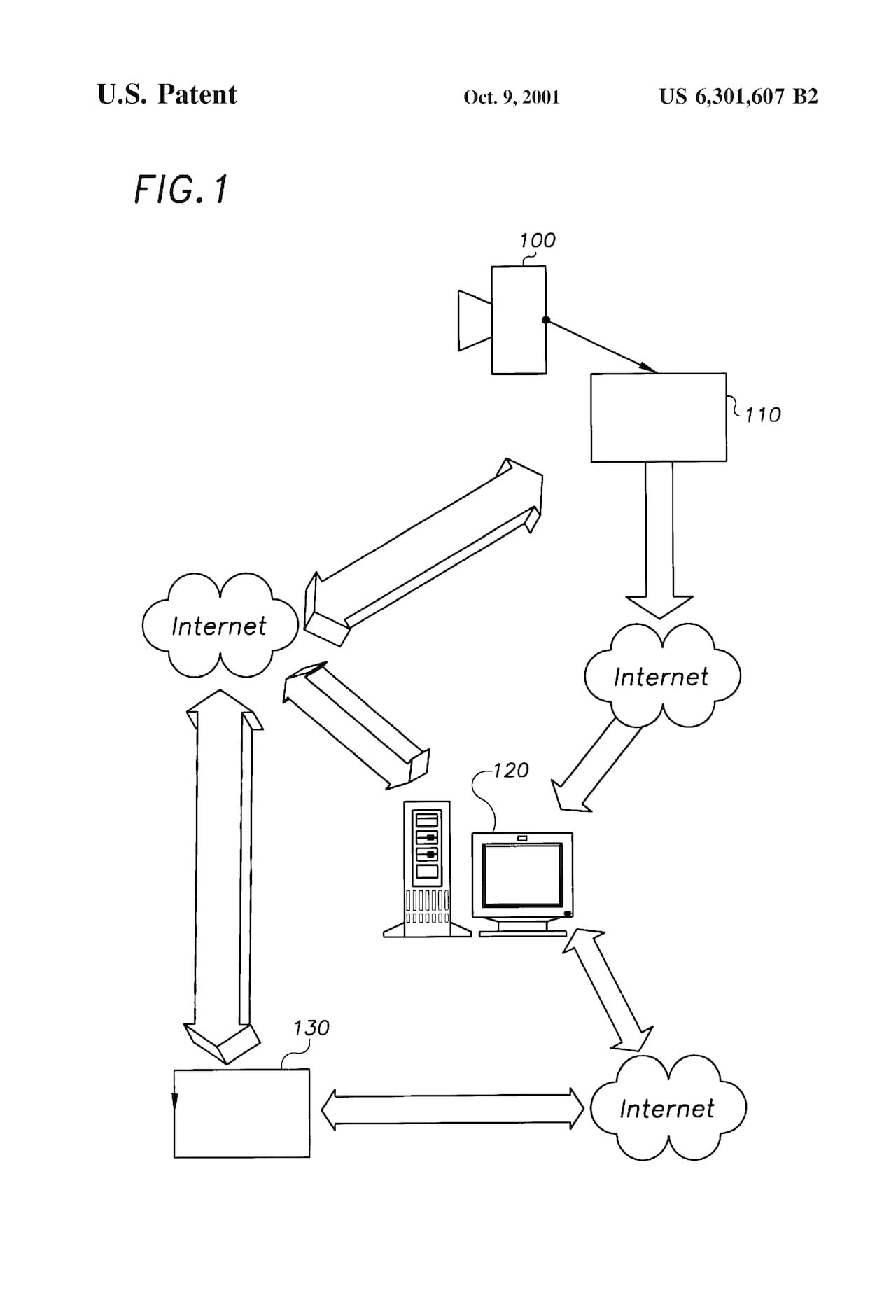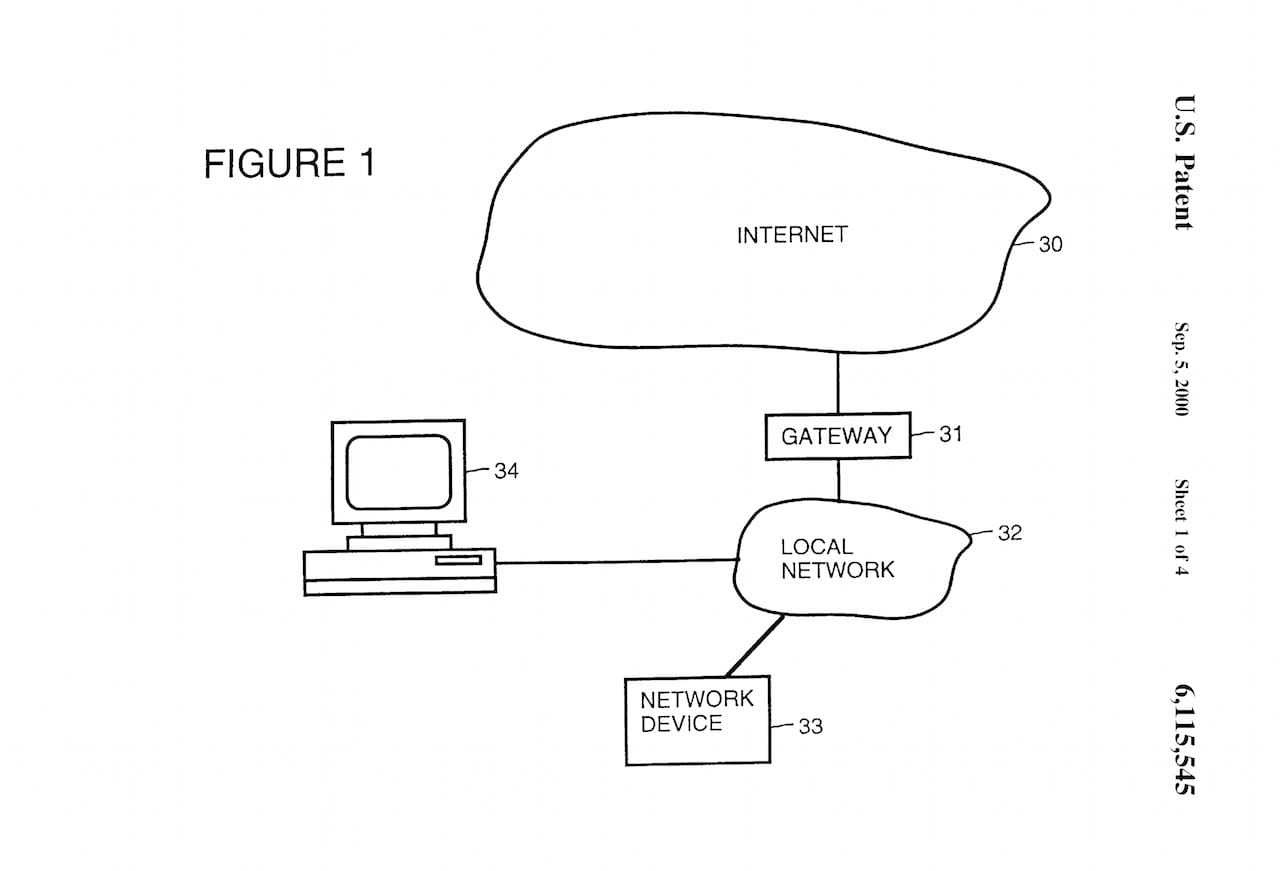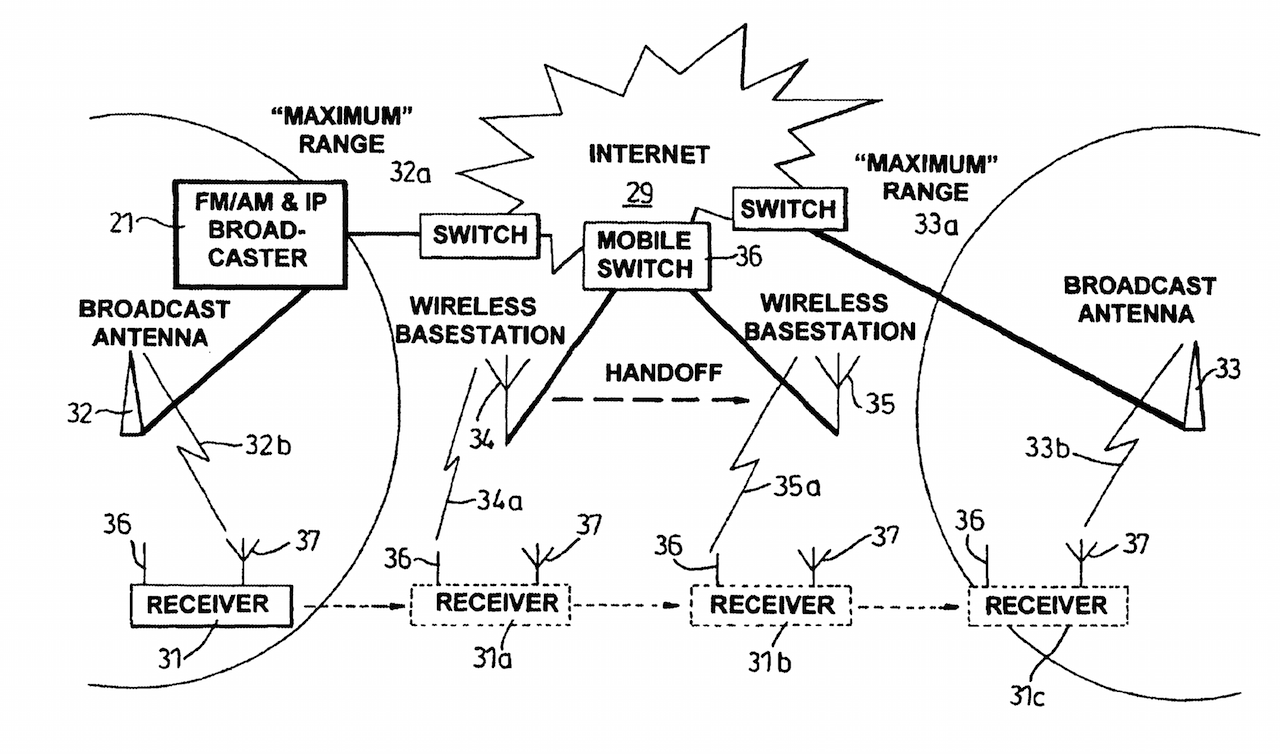How Would You Draw the Internet?
What would the internet look like, if you had to draw it?

What would the internet look like, if you had to draw it? According to illustrations that accompany patents, mostly clouds, as one might have guessed, although there are also some pretty unexpected representations. New York–based programmer and data journalist Noah Veltman last week shared on Twitter a number of patent drawings he found and gathered, showing that there are some rather delightful visual nuggets hidden in the dense, technical language that often fills patent documents.
As a borderless, infinite, ever-shifting system, the internet is obviously a pretty difficult subject to depict graphically, but people are always trying to, most often through maps. There’s the Internet Mapping Project, for example, which reveals how users navigate their digital spaces, and PEER 1’s dizzying Map of the Internet. In a different take, artist Ingrid Burrington this year launched a field guide that illustrates “physical realities of the internet,” as she described to Hyperallergic.
The patent drawings are simple, rough sketches meant as representations for a greater purpose, but they’re really quite delightful. There are many different variants on the cloud (the standard shape of which may be the source of how we use the term today): some are simple, symmetric ones while others are extremely puffy cumulous masses; one drawing has shading so it resembles a thought bubble from a comic book. But some visualizations are more geometric, from a dartboard-like web (complete with a spider-like crawler) to irregular octagons and hexagons. Others just envision the internet as amorphous, mysterious blobs — perhaps the most accurate depiction of them all.
